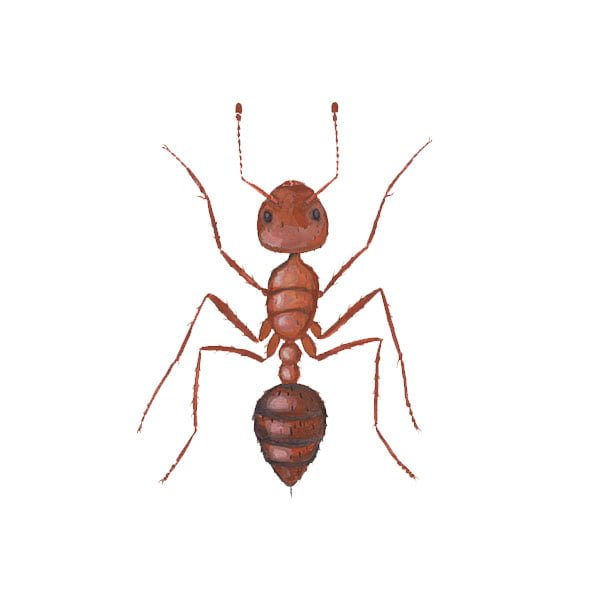
Actual Size: ⅛” to ⅜”
Characteristics: Blackish to red in color. Fire ants have a stinger in their abdomen.
Legs: 6
Antennae: Yes
Wings: The reproductive males and females have wings.
Habitat: Fire ants build mounds in almost any soil near structural foundations or in landscaping and prefer open sunny areas.
Fire Ant Habits:
Fire ants are small ants that live in colonies, containing up to 400,000 workers. Named for their notorious painful sting, their stinger, located on their abdomen, is visually obvious under close examination. When a fire ant mound is disturbed, workers immediately make their way to the surface. They will grab their victim’s skin with their mandibles and sting in unison as a response to the slightest movement. Their attacks are coordinated as dozens or hundreds of workers sting simultaneously.
Fire ants often nest near moisture-laden areas, like rivers, well-watered lawns, and streams. They create mounds, burrowing in the soil. Some colonies have multiple queens, but smaller nests typically only have a single queen. As they reproduce rapidly, they can spread throughout a lawn or open area very quickly. Unlike most venomous ants, fire ants bite to hold their prey and then use the stinger in their abdomen to deliver venom.
For most people, the sting of a fire ant causes a painful, raised welt and is the primary threat caused by this ant species. Most individuals describe the sensation as feeling like ‘fire’, hence their name. Fire ants can also aggressively dominate local or native ant species in the area, disturbing ecosystems and the animals that eat native ant species. Fire ants are considered invasive, and up to $5 billion is spent in the U.S. alone on fire ant treatments. If you suspect you have fire ants, it is recommended to contact a licensed ant exterminator.